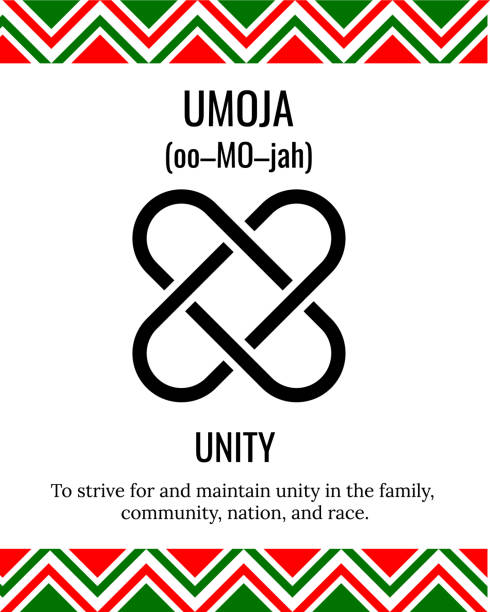
Kwanzaa is an annual African American celebration. It’s comprised of seven days where you’ll discuss and celebrate specific principles that are meant to strengthen relationships. These principles are known as the Nguzo Saba. To experience the full benefits of this tradition, it’s good to know what each principle represents and how to celebrate Kwanzaa properly.
An Introduction To Kwanzaa
Kwanzaa was first celebrated in 1966 and is based on certain African festival traditions. The tradition is based on seven distinct principles and you’ll celebrate one per day. During Kwanzaa, you’ll need an altar, a unity cup, seven candles, and a kinara. Your altar should be placed on a table that is broad enough to hold everything that will be placed around the altar over the seven days. This table should be in the center of the room and you’ll place a traditional tablecloth as well as a mat or mkeka on it.
The kinara is a candle holder that you’ll use to hold one black candle in the middle as well as three red candles to the left of the black one and three green candles to its right. Black represents the people, red represents their struggle, and green represents their hope for the future. These colors also correspond to each principle and as such, they’ll be lit on specific days.
Since gift-giving is a part of the tradition, you’ll need to make preparations for these as well. It’s important to note that these gifts don’t have to be expensive and emphasis is placed on them being meaningful or even homemade.
Additionally, You’ll need to prepare specific foods and drinks on each day of the celebration. It’s typical for corn to be an essential ingredient in the meals that are prepared. Finally, the festivities are usually led by a minister or leader.
Day 1 of Kwanzaa: Umoja
Umoja is the first principle of Kwanzaa and the word means unity. The first day of Kwanzaa is celebrated on December 26 and will be centered around this principle. This is the day that those involved in the celebration discuss how to strive for unity in the family and the overall community. Some people extend it further to include unity within the Black race and African Americans throughout the nation.
RELATED: Should I Celebrate Kwanzaa?
How To Celebrate Umoja
To start the first day of Kwanzaa, the leader asks, “Habari gani?” or “What’s happening?” of those who are in attendance. Everyone will reply “Umoja” to signify which principle is being celebrated. Fresh fruits are placed around the altar to represent African idealism and prayers are said. The leader will then recite a Harambee, which is known as a call for unity.
At that point, the older adults will prepare libations or a beverage that will be placed in a unity cup or Kikombe cha Umoja, that’s also on the altar table.
While you don’t have to use a particular beverage, it’s typical for a Black family to use fruit juice since younger people are involved.
In some cases, everyone present will share the same cup but some celebrations have separate cups for all the attendees. This cup is important as it symbolizes being unified with your loved ones as well as your ancestors.

Once the libations are prepared, someone will light the black candle. Traditionally, that responsibility is given to the youngest child but anyone can be chosen.
RELATED: Kwanzaa: What It Really Is And How & Why It’s Celebrated
After lighting the candle, they may make a statement about the principle of Umoja to everyone present. It’s also common for them to share a passage, story, song, or poem that relates to how Umoja is reflected in their daily lives. This part of the ceremony aims to explain the first principle in a way that everyone understands.
With the presentation complete, everyone will share the libations to represent that they are all of one accord with Umoja. It’s not uncommon for others to also share their stories while discussing Umoja. Sometimes, you’ll exchange gifts on this day and every day after. Other families wait until the last day to give everyone their gifts as there is no preference. That marks the end of the first day’s ceremony and the black candle is extinguished.
Umoja is just the beginning of Kwanzaa and will set the mood for the rest of the festivities.









